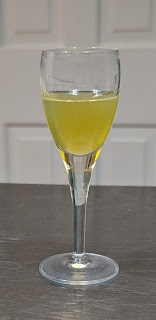I volunteered to participate in my university's Skills Infusion program. This professional development opportunity has faculty reviewing one of their existing course plans and highlighting those places where the NACE competencies come into play. The goal of this work is that students will be able to better articulate what they learned in the class with respect to transferable, marketable skills. The program's name is a misnomer since it is not about "infusing" anything: it is explicitly about highlighting those places where these topics already come up.
One of the main reasons I signed up for this program was to have an excuse to see interesting people from across campus. I was not disappointed in our first in-person meeting yesterday, when I got to catch up with a few faculty and staff whom I had not seen in a while. The university is a strange place where lots of smart people work next to each other without really interacting, so it was nice to be able to see some of my favorite Ball State people in one place.
Yesterday's meeting was rather casual, with most of the time spent in free Q&A within small groups. Our moderator emphasized the point that I also emphasized above: we should be looking at identifying where NACE competencies are already happening and helping students identify and talk about them.
This presentation made me realize that this framing of NACE Competencies is a lot like Myers-Briggs personality tests: everybody wins! As your MBTI score only presents positive aspects to you, so also does the idea that students are already meeting these competencies in our classes. Contrast this with the Big Five personality model, which deals with people as they really are: sometimes neurotic, sometimes disagreeable, sometimes unconscientious. Just so, sometimes we teach toward the NACE Competencies, and sometimes we teach against them.
I mentioned an off-the-cuff example in my small group: grading students based on attendance counters the competence of professionalism. By grading attendance, we remove students' agency and their opportunity to practice good decision-making. We also risk destroying their intrinsic motivation by adding extrinsic rewards for desired behavior.
Some of the participants at my table seemed to understand where I was going with this train of thought, that many of our practices hinder students from learning the NACE competencies or, worse, teach them counter-competencies. One well-meaning interlocutor suggested that grading attendance actually does help them learn professionalism, because "that's what professionalism is in my class." We did not take the opportunity to dive deeper into this epistemology, but it sure sounded to me like obedience rather than professionalism, meeting the adaptive function of school.
This short response is just a stake in the ground. I am curious to put more thought into how we teach counter to these specific competencies, which themselves seem to be taken as a sort of gospel in secular higher education. I think this will be the lens by which I examine my own course during this semester's Skills Infusion program.
